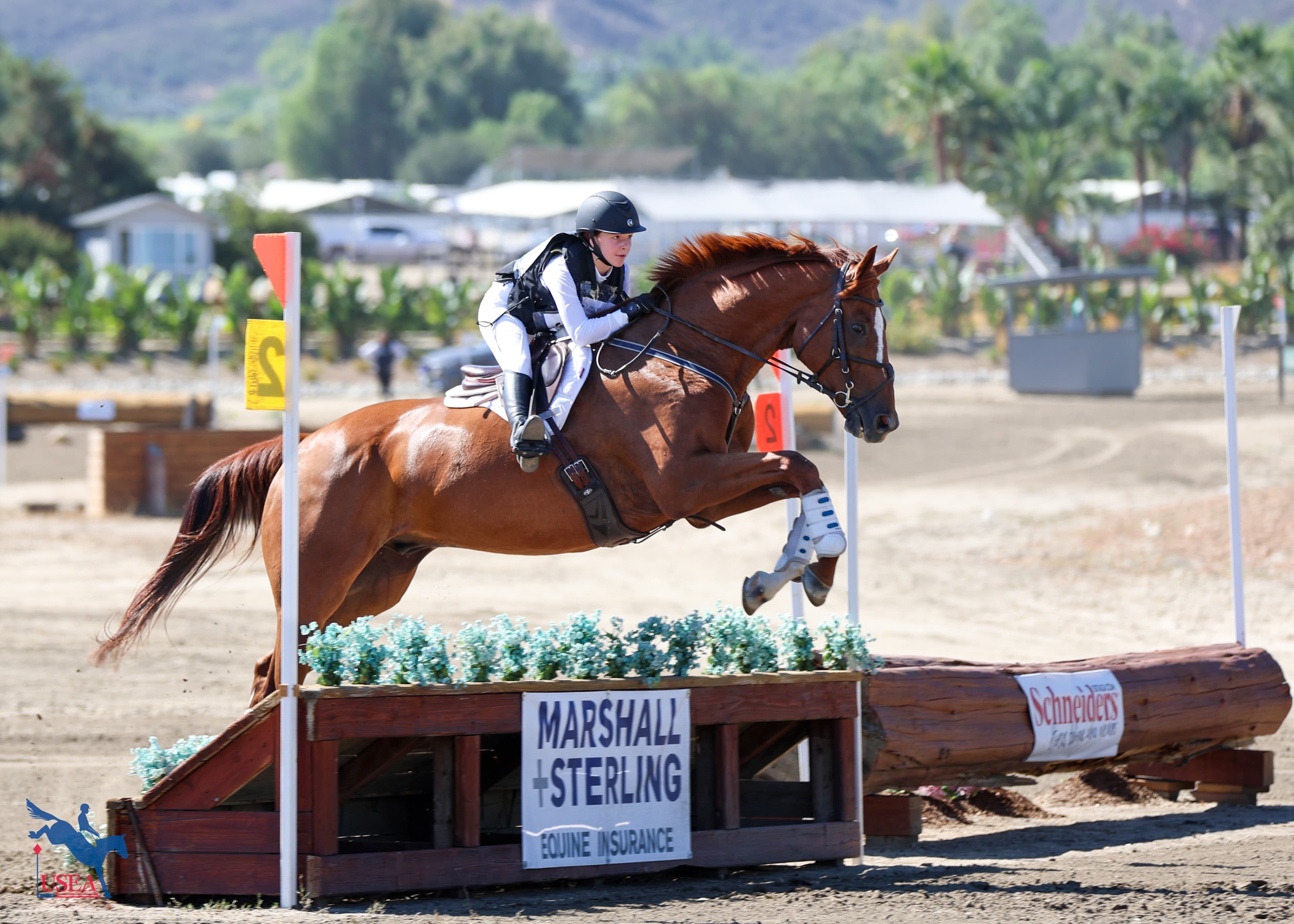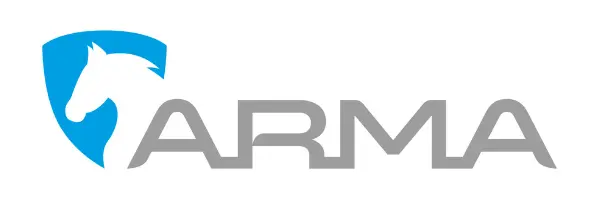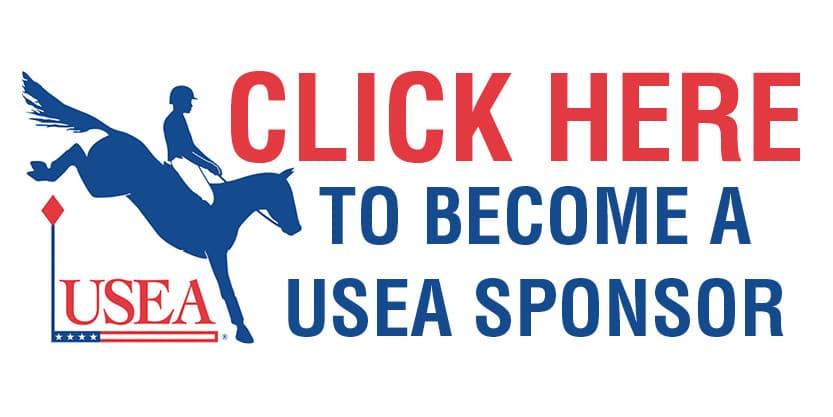Get Fit & Focused in 52 Weeks with Coach Daniel Stewart
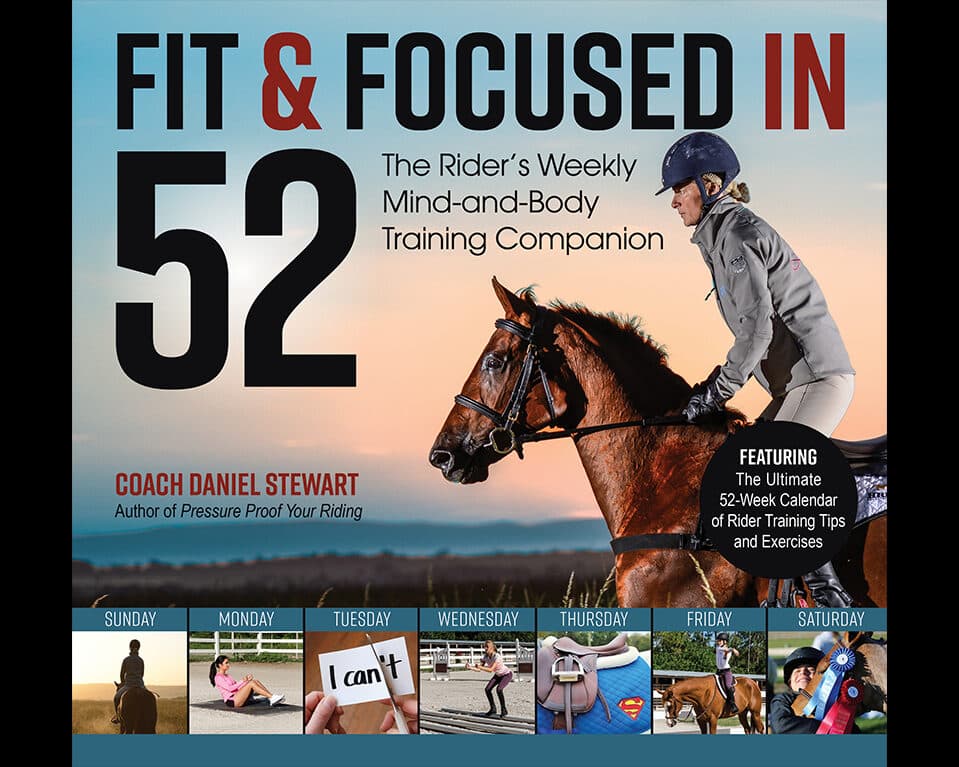
In this excerpt from his new book Fit & Focused in 52, leading sport psychologist and equestrian fitness trainer Coach Daniel Stewart talks about the zone you want to be in…and one you might want to linger in, but shouldn’t. Plus, he gives you one mental training tip and one physical training exercise to practice this week so you can be a better all-around equestrian athlete.
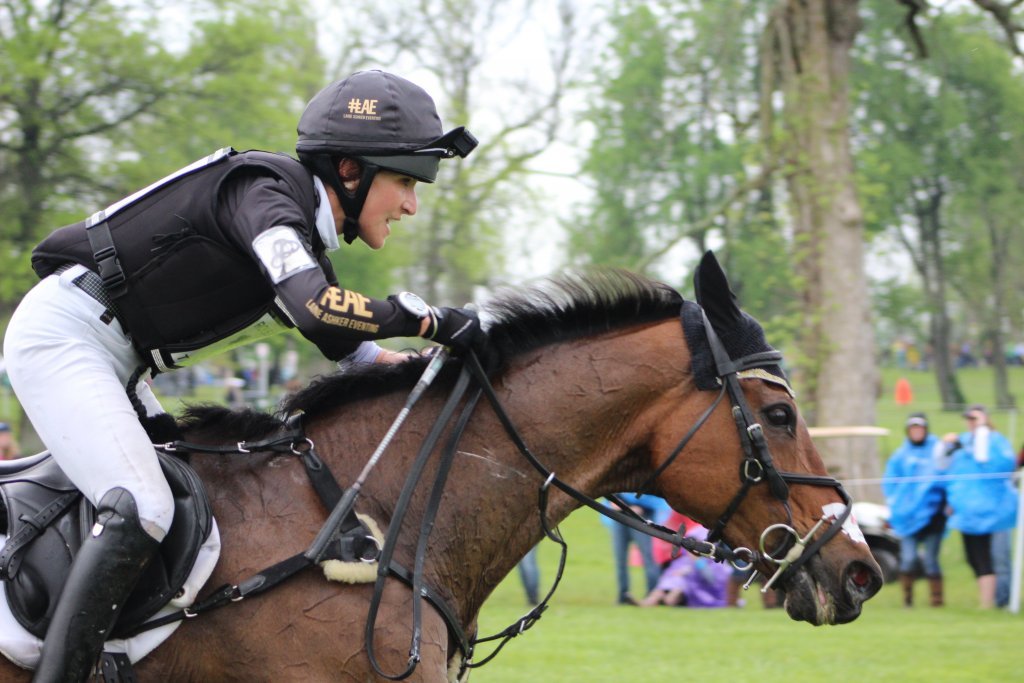
You’ve most likely heard someone say, “Get in the Zone.” But just what is it? And how do you get there? Well, the Zone is an abbreviation for Individual Zone of Optimal Functioning (IZOF), and it describes a specific zone of mental arousal that allows you to function optimally.
When you get into this special mindset, your mind becomes locked on the present and positive (instead of focusing on problems from your past). It’s here that you believe you:
- Have the skills to match any challenge.
- Feel completely immersed in the ride.
- Are able to adjust your tactics depending upon new information.
- Have crystal clear focus and clarity of goals.
- Lose any thoughts of self-doubt.
If all this wasn’t enough, there’s another benefit of being “in the Zone” that’s perhaps the most important of all: it’s called the autotelic experience, and it’s basically the feeling that the love of the ride is all the reward you really need. You’re no longer motivated by ribbons and results but instead by a deeper love of the horse and sport.
You need to beware of a different zone, though: given the chance, many riders would love to find their Comfort Zone, plant roots, and stay forever, because everything they do there, they do well. They look good doing it and don’t make many mistakes. However, while this sounds like a good place to be, it’s actually a place that weighs you down instead of allowing you to soar.
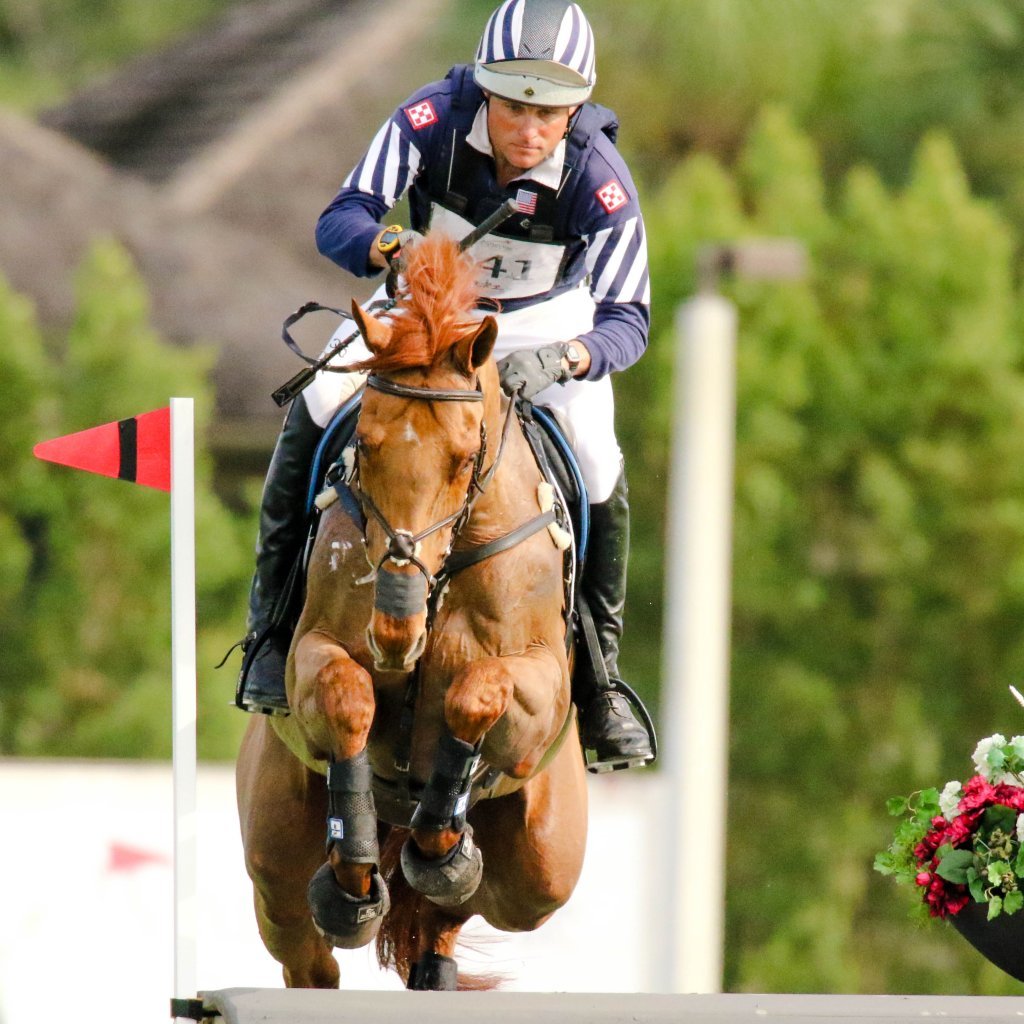
You’ve probably heard, “You learn the most from your worst lessons.” While this might sound a little pessimistic, it’s actually true because attempting and achieving a difficult task (that is, riding outside your Comfort Zone) helps you to develop the belief that you have the confidence and courage to accept and learn from struggles and challenges—instead of simply trying to avoid them.
An important key to learning outside your Comfort Zone is being able to accept that you have made a mistake. Mistakes provide you with learning opportunities that constant success and comfort cannot. Every time you make a little mistake, you learn something about that situation—and yourself. But here comes the problem: mistakes don’t happen inside your Comfort Zone, so learning doesn’t happen there, either. In order to soar, you’re going to need to give up your Comfort Zone before it weighs you down.
Note: Pushing yourself outside the Comfort Zone is a good thing, but pushing too far will likely get you into a bit of trouble.
This Week’s Focus Tip: Get in the Zone
To ride your best you’re going to need to focus on the positive and present rather than problems from your past. You’ll also need to believe in yourself, recover quickly after mistakes, remember your goals, and maintain crystal clear concentration. The good news is that all of this happens automatically—without effort—every time you “Get into the Zone.”
Getting into the Zone is perhaps the single most important thing any rider can do, but you’re going to need to first create a state of flow (that mental harmony, rhythm, or tempo that allows your brain to change its thinking from being forced, mechanical, and over-analyzing to automatic, confident, and not rushed). There are two ways to create this important mental rhythm: one, focus on rhythmical sounds in your environment like your horse’s breathing or hoof falls (this is called targeting) and two, create your own rhythmical sounds by repeating (out loud) a verbal cadence like, “1, 2, 1, 2” or “Be strong, push on,” (this is called cadence training).
My favorite cadence of all time came from a young rider in one of my clinics. She told me that when she gets nervous she whispers to herself, “Fish are friends not food.” When I asked why, she simply said, “Because when I think of Bruce [the shark from Finding Nemo] it makes me laugh and smile.” Not only does her cadence get her into the Zone—it also gets her into a good mood!
This Week’s Focus Homework
Write down one rhythmical target sound and one rhythmical cadence that you’ll use to Get into the Zone. Try both of them this week to see if one works better for you.
Now, match your mental training with some physical training!
This Week’s Fitness Tip: Canter Crunches
Made up of your abdominal, back, and hip muscles, your core is responsible for maintaining your posture while stabilizing and mobilizing your hips and back. Without a strong core, your position and posture—not to mention your half-halts, transitions, and using your body as an aid would all suffer. Strengthen your core this week by working on the canter crunch. Here’s how you’re going to do it:
1. Begin by sitting on the floor and doing your best to mimic the two-point position.
Keep your shoulders open, eyes forward, knees bent, and upper body in front of the vertical, elbows in, and thumbs on top. Make sure you place the same amount of weight in each seat bone and your knees are open and bent.
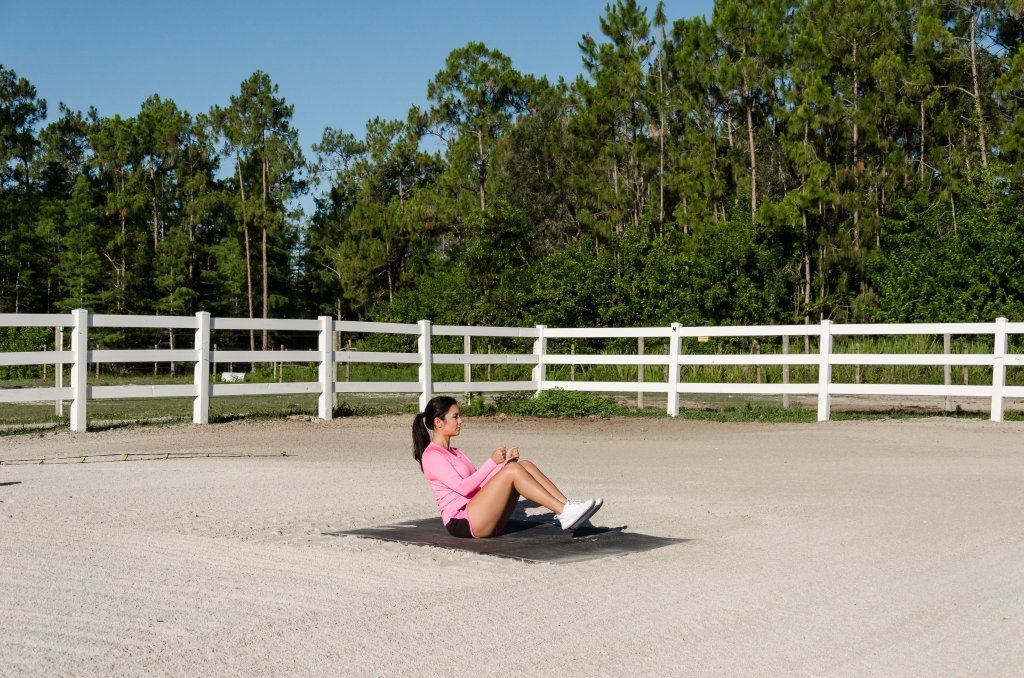
2. Start the exercise by slowly opening your hip angle, extending your knees and pressing your heels forward. You should feel as if you’re placing weight in your stirrups. Make sure to keep your hands independent of your hips and knees (your elbows will open and close with your hips ensuring your hands remain still). You might find that you need to lean backward slightly to maintain your balance.
3. When your legs are extended comfortably forward (still bent, not straight), pause for one second to focus on your balance and the symmetry in your seat bones.
4. Slowly return to the starting position by contracting your core (focus on your stomach at this stage) to close your hip angle, while also closing your knee and elbow angles.
5. Pause for one second when you reach the starting position—and do it again. Aim for three sets of 20 repetitions.
Keep This in Mind
Focus on your balance, rhythm, and posture when doing your canter crunches. They’re all very important so working on them here will ultimately improve your riding. Make sure you place the same amount of weight in each seat bone and extend your legs equally (think placing the same amount of weight in each heel) because symmetry is just as important as balance, rhythm, and posture.
Note: My favorite exercise is a cross between a lunge and a crunch. I call it lunch.
This excerpt from Fit & Focused in 52 by Coach Daniel Stewart is reprinted with permission from Trafalgar Square Books. The book is available for purchase online through Trafalgar Square Books.


